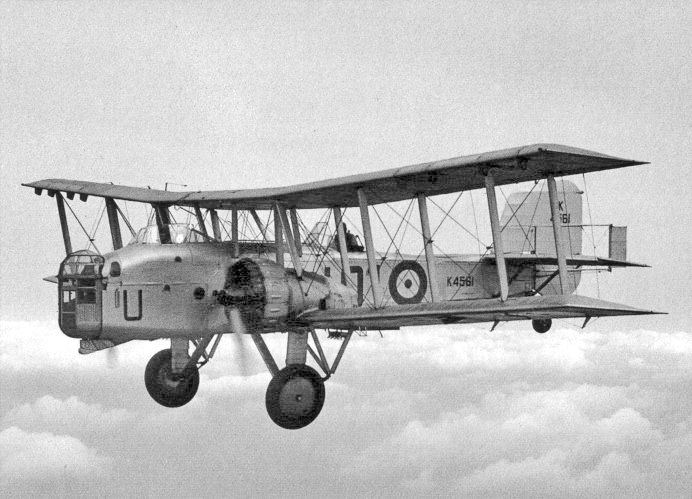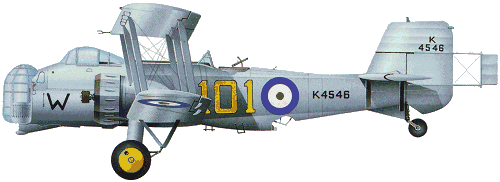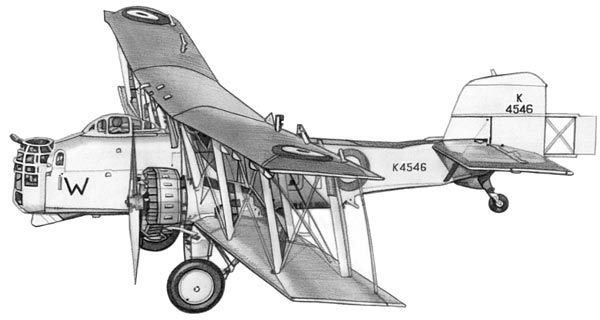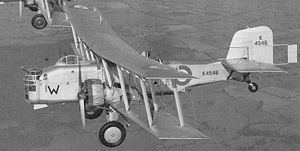Top speed 238 km/h Length 14 m Retired 1941 Manufacturer Boulton Paul Aircraft | Wingspan 22 m Introduced 1934 First flight 1933 | |
 | ||
The Boulton Paul P.75 Overstrand was the last of the twin-engine biplane medium bombers of the Royal Air Force, a series that had begun during the First World War with the likes of the Vickers Vimy and Handley Page Type O. The Overstrand saw brief service in the late 1930s and by the Second World War, only a few surviving aircraft remained in operation with training units.
Contents

Design and development

The Overstrand was a development of the Boulton Paul Sidestrand, which had first flown in 1928 and like the Sidestrand was named for a village in Norfolk, home also of Boulton Paul's Norwich factory. The Sidestrand was similar to its First World War predecessors, in that it had open cockpits and hand-operated machine-guns. Unlike its predecessors, the Sidestrand could fly at 140 mph (225 km/h) making operating the guns in exposed positions difficult, particularly in the nose. The Overstrand was fitted with an enclosed and powered nose turret with a Lewis gun, the first RAF aircraft to have a power-operated turret. Rotation was by pneumatic motors, elevation and depression of the gun by hydraulic rams. The cockpit was also enclosed but the dorsal and ventral gun positions remained open, though shielded.
Operational history

The first Overstrand flew in 1933 as the Sidestrand Mk IV, powered by two 580 hp (430 kW) Bristol Pegasus IM.3 engines, instead of the 460 hp (340 kW) Bristol Jupiters in the Sidestrand and was capable of 153 mph (246 km/h). The bomb load was also increased to 1,500 pounds (680 kg). The conversion was a success and three more Sidestrands were modified using the 580 hp (430 kW) Bristol Pegasus II.M3. 24 Overstrands were produced and in 1936 began replacing the Sidestrand in No. 101 Squadron RAF, the only Sidestrand squadron) and briefly in No. 144 Squadron RAF, being replaced by Bristol Blenheims in 1938. At the outbreak of the Second World War, eleven Overstrands remained in service and six were used for gunnery training. They remained in operation until May 1941, though flying was limited following the mid-air breakup of Overstrand K8173 on 22 April 1940. Plans were made to develop a version with retractable undercarriage as the P.80 "Superstrand" but the project was abandoned.
Operators

Accidents and incidents
A number of Overstrands were destroyed or beyond economic repair in accidents, the type had only two fatal accidents:
Specifications
Data from the British Bomber since 1914
General characteristics
Performance
Armament
